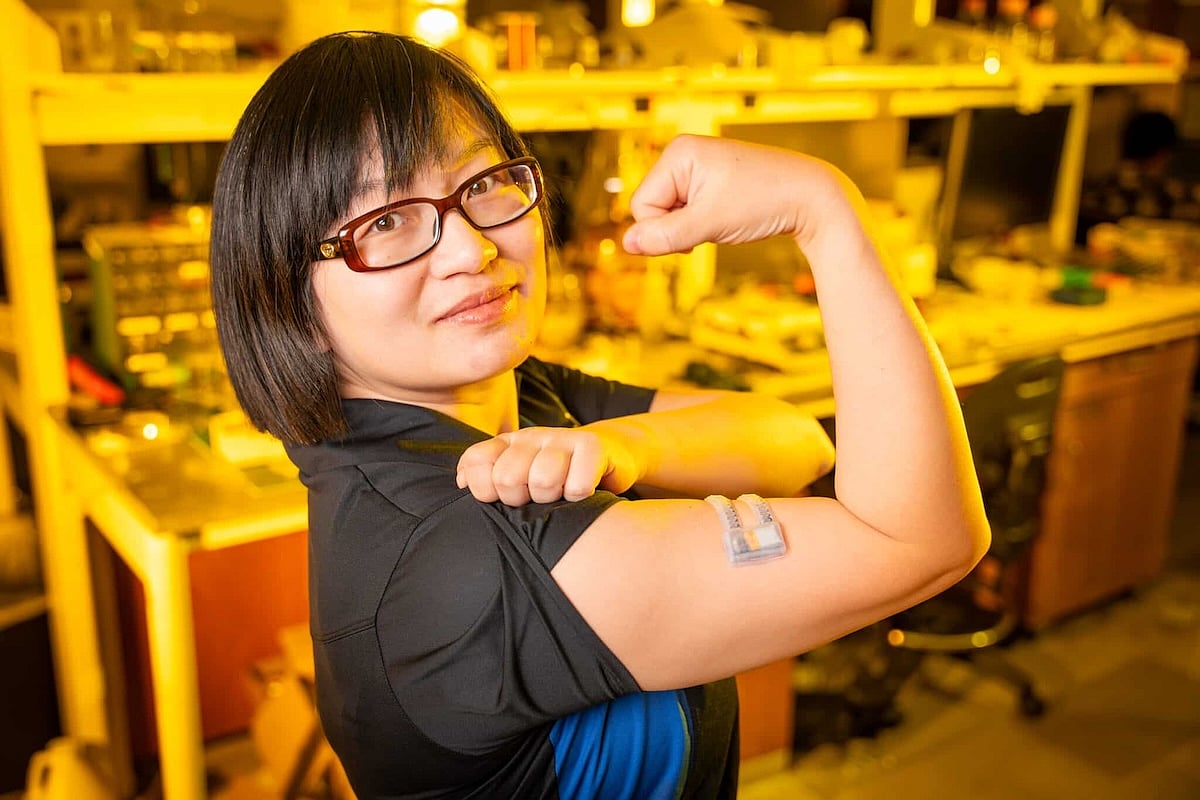Get Healthy!

- Posted September 18, 2025
Experimental Patch Provides Real-Time Feedback On Muscle Performance
An experimental wireless patch might help injured athletes better recover from muscle tears, sprains and strains, according to a new study.
The patch measures tissue stiffness by sending sound waves along the surface of the body and listening to the resulting vibrations, researchers said recently in the journal Science Advances.
It’s like searching for a wall stud upon which to hang a picture — tapping on a wall without a stud behind it produces a lower-pitched noise than a wall directly on a stud, researchers said.
Integrated into sportswear, the patch could provide real-time feedback on muscle performance, researchers said. This might allow athletes to optimize their training sessions, ward off fatigue and fine-tune recovery from injury.
“We envision future versions built right into sports gear, medical wraps, everyday clothing or assistive robotics, creating a continuous ‘health dashboard’ for your body’s hidden layers,” said senior researcher Xiaoyue Ni, an assistant professor of mechanical engineering and materials science at Duke University in Durham, N.C.
“And it will be as easy to wear as a smartwatch, but far more powerful,” Ni added in a news release.
Tissue stiffness is important information for doctors, providing insight into problems ranging from cancer diagnosis, resuscitation and muscle injuries, researchers said.
Unfortunately, bulky and expensive ultrasound machines are now needed to take such measurements.
The prototype patch, currently about the size of a watch face, can be stuck anywhere on a person’s skin for a quick reading of tissues up to a couple inches deep, researchers said. The patch is powered by battery and wirelessly communicates with Bluetooth devices.
The patch sweeps between 50 Hertz (roughly the sound of deep thunder) to 800 Hertz (akin to an ambulance siren), allowing it to measure stiffness of tissues and differentiate skin from underlying tissue.
“Creating this automated two-layer model analysis and integrating it into a system-level design has been the most challenging part of this project,” lead researcher Chenhang Li, a doctoral student in Ni’s lab, said in a news release. “And then we had to figure out how to do the signal processing in real-time and complete a large number of validation tests. It’s been a long time coming.”
Now that the device has been proven as a concept, researchers plan to investigate the best potential uses for it.
“I recently had my first child and discovered that I could use this device to track my body’s supply of milk in real-time,” Ni said. “Nobody has ever created a tissue stiffness monitor like this before, so the potential use cases are truly limitless.”
More information
The Cleveland Clinic has more on ultrasounds.
SOURCE: Duke University, news release, Sept. 2, 2025






